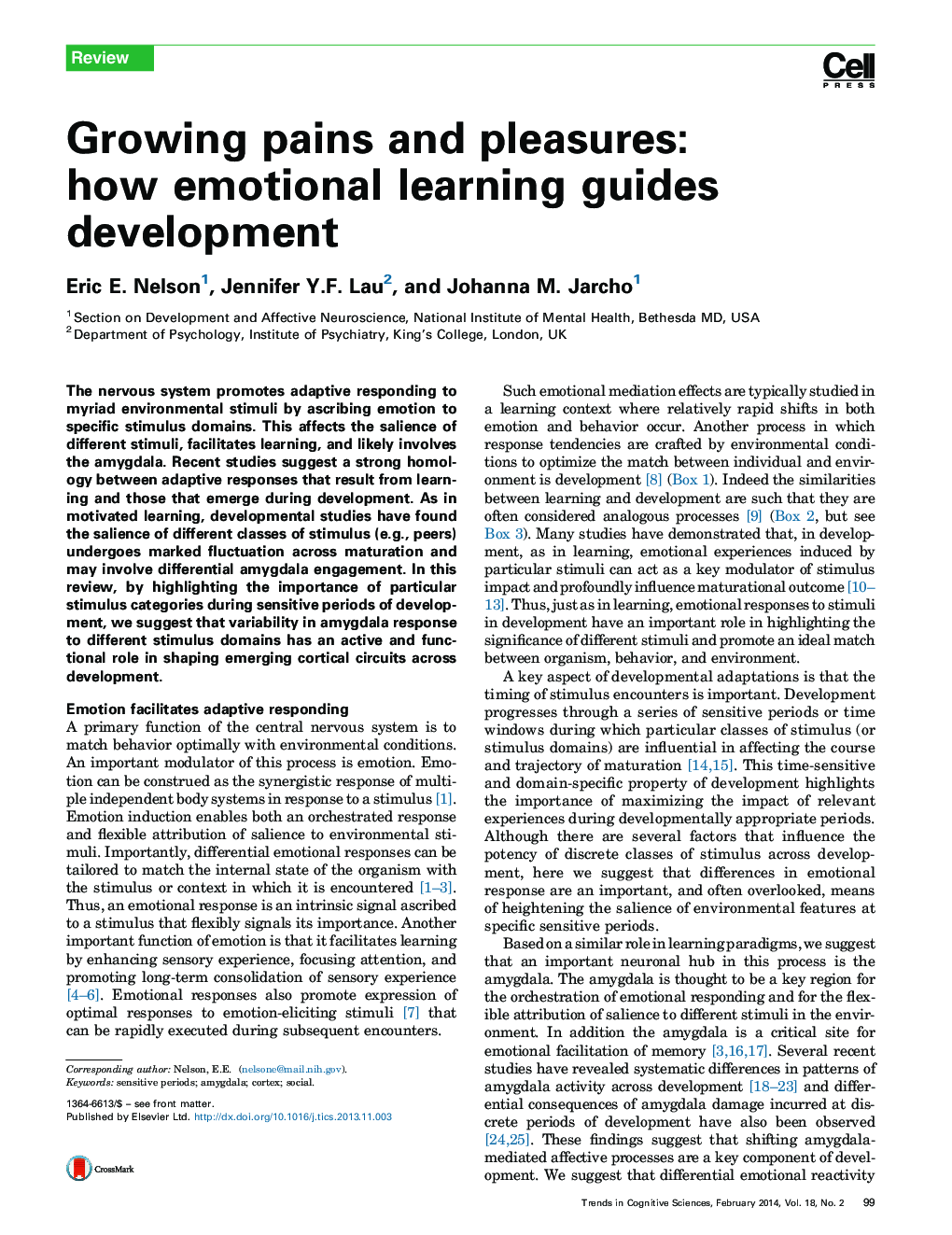| Article ID | Journal | Published Year | Pages | File Type |
|---|---|---|---|---|
| 141479 | Trends in Cognitive Sciences | 2014 | 10 Pages |
•Learning and development enable adaptive changes in brain via similar neurobiological mechanisms.•Emotion has an important role in facilitating both learning and development.•Amygdala-mediated motional sensitivity and stimulus salience change across development in domain-specific ways.•Emotional variability may help guide learning during developmentally sensitive periods.
The nervous system promotes adaptive responding to myriad environmental stimuli by ascribing emotion to specific stimulus domains. This affects the salience of different stimuli, facilitates learning, and likely involves the amygdala. Recent studies suggest a strong homology between adaptive responses that result from learning and those that emerge during development. As in motivated learning, developmental studies have found the salience of different classes of stimulus (e.g., peers) undergoes marked fluctuation across maturation and may involve differential amygdala engagement. In this review, by highlighting the importance of particular stimulus categories during sensitive periods of development, we suggest that variability in amygdala response to different stimulus domains has an active and functional role in shaping emerging cortical circuits across development.
